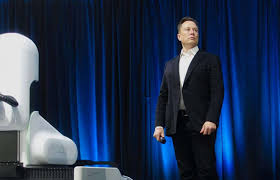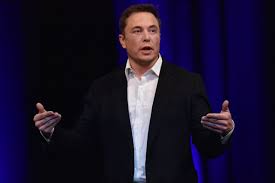Musk Funds $5 Million for 23 Student Carbon Research Teams – A Step Toward Cleaner Futures?

Musk Funds $5 Million for 23 Student Carbon Research Teams – A Step Toward Cleaner Futures?
In a world facing the escalating consequences of climate change, the need for urgent action has never been more pressing. As governments, organizations, and individuals search for solutions, Elon Musk, the renowned entrepreneur and founder of SpaceX and Tesla, has once again stepped forward with an ambitious initiative. Musk has pledged $5 million to fund 23 student-led carbon research teams, a significant commitment aimed at accelerating the development of sustainable technologies and strategies for tackling the global climate crisis. This generous funding could not only support the next generation of environmental scientists but also potentially lead to groundbreaking discoveries in the fight against carbon emissions. But what does this funding mean for the future of carbon research, and could it be the catalyst for a cleaner, more sustainable future?
The Need for Innovative Solutions
The world is currently facing unprecedented environmental challenges, with rising temperatures, shifting weather patterns, and more frequent extreme weather events. Climate change, largely driven by carbon emissions from industrial activities, transportation, and deforestation, has become a central issue for global leaders and scientists alike. The urgency to find effective and scalable solutions to mitigate these emissions has never been greater. According to experts, reducing global carbon emissions is critical to limiting global warming to 1.5°C above pre-industrial levels, the target set by the Paris Agreement.
Traditional methods of reducing carbon emissions, such as increasing the use of renewable energy, enhancing energy efficiency, and promoting sustainable practices, have made progress. However, these efforts alone are not enough to meet the global climate targets. Experts agree that more radical solutions are necessary, including innovations in carbon capture, carbon removal, and other cutting-edge technologies that can address the root cause of climate change. The role of students and young researchers in this context is crucial; they bring fresh perspectives and innovative ideas that can challenge existing paradigms and drive the development of new, transformative solutions.
This is where Elon Musk’s $5 million initiative comes into play. By funding 23 student-led teams dedicated to carbon research, Musk is supporting a diverse range of innovative approaches to solving one of the world’s most complex problems. These students, many of whom are still in the early stages of their careers, will be given the opportunity to explore new ideas in carbon reduction, carbon capture, and carbon removal technologies. In the process, they may unlock new solutions that could help change the course of our future.
The Structure of the Initiative
Musk’s funding will support 23 research teams composed of students from universities and academic institutions around the world. These teams are tasked with investigating different aspects of carbon-related research, from capturing carbon emissions directly from the atmosphere to creating innovative ways to prevent carbon emissions in the first place. The funding, which is part of Musk’s broader environmental vision, is meant to act as a catalyst for rapid, high-impact innovation in carbon management technologies.
The participating teams are diverse in their research focus. Some will explore carbon capture and storage (CCS) methods, which involve capturing carbon dioxide (CO2) emissions from industrial processes and storing them underground to prevent them from entering the atmosphere. Others will investigate direct air capture (DAC) technologies, which aim to remove CO2 directly from the air. Some teams will focus on improving energy efficiency in existing systems, while others will work on developing carbon-neutral or even carbon-negative industrial processes.
What makes this initiative particularly exciting is the emphasis on student-led research. Traditionally, large-scale environmental research projects have been dominated by established scientists and institutions. While this has resulted in some important advancements, it often leaves little room for fresh, unorthodox ideas that could lead to groundbreaking breakthroughs. By providing students with the resources, mentorship, and funding they need to pursue their ideas, Musk is opening the door for new ways of thinking about carbon emissions and climate change solutions.
Each team will receive a portion of the $5 million funding, with specific amounts allocated based on the scope and potential impact of their proposed research. In addition to financial support, the teams will also have access to mentorship from experts in the field, as well as collaboration opportunities with Tesla, SpaceX, and other Musk-led organizations. This level of exposure and support could be invaluable in turning early-stage research into real-world applications.
The Power of Student Innovation
The involvement of students in high-level environmental research has the potential to bring about a paradigm shift in the field of carbon science. While established researchers may have more experience, students bring something equally valuable to the table: a willingness to think outside the box and challenge conventional wisdom. They are unburdened by the constraints of tradition and are often more willing to explore bold, unconventional ideas that could lead to revolutionary breakthroughs.
Furthermore, students are at the forefront of technological innovation. Many of the emerging technologies that could play a crucial role in carbon reduction, such as artificial intelligence (AI), blockchain, and nanotechnology, are fields where students and young researchers are making significant contributions. The integration of these technologies into carbon research could result in novel solutions that were previously unimaginable. For example, AI could be used to optimize carbon capture systems, while blockchain technology could help track carbon credits and incentivize carbon-reducing behaviors on a global scale.
In addition to their innovative ideas, students often possess a deep passion for addressing climate change, driven by the understanding that their generation will bear the consequences of current environmental policies. Many students see the climate crisis as one of the most critical challenges of their time, and this sense of urgency fuels their determination to create meaningful change. By empowering them to conduct high-level research and providing the necessary resources, Musk is tapping into a vast reservoir of untapped potential. The result could be transformative solutions that have a lasting impact on the global effort to combat climate change.
Musk’s Commitment to Sustainability
Elon Musk’s commitment to sustainability and environmental responsibility is well-documented. As the CEO of Tesla, Musk has played a pivotal role in promoting the adoption of electric vehicles (EVs) and renewable energy technologies. Tesla’s electric cars and solar products have revolutionized the automotive and energy industries, helping to reduce carbon emissions and accelerate the transition to a low-carbon economy. In addition, SpaceX, Musk’s space exploration company, has made strides in reducing the environmental impact of space travel through reusable rocket technology.
Musk’s support for student-led carbon research is a natural extension of his broader environmental vision. While his previous efforts have focused on transforming industries such as transportation and energy, this new initiative allows him to support a new generation of researchers who will likely continue to push the envelope on carbon management and climate change solutions. Musk understands that addressing the climate crisis requires more than just technological innovation; it requires a broad-based effort that involves collaboration across sectors, industries, and generations. By funding student research, Musk is investing in the future of carbon science, ensuring that new, more effective solutions will emerge from diverse sources.
While Musk’s actions have sometimes sparked controversy, his focus on tackling climate change is widely acknowledged as one of the most significant contributions to sustainability in recent years. His $5 million investment in student-led carbon research teams underscores his commitment to accelerating the pace of innovation and finding practical solutions to one of the most urgent global challenges. By supporting student research, Musk is not only helping to advance carbon science but also empowering the next generation of leaders who will continue to drive the fight against climate change.
The Challenges Ahead
Despite the potential benefits of this initiative, there are several challenges that must be addressed for it to have a lasting impact. First and foremost, the scalability of the solutions proposed by these student-led teams will be a key factor in determining their success. While innovative ideas are important, they must be viable on a large scale to have a meaningful impact on global emissions. This means that the teams will need to work closely with industry partners, government agencies, and other stakeholders to ensure that their research translates into real-world applications.
In addition, the students involved in these research projects will face the challenge of navigating the complex regulatory landscape surrounding carbon emissions and environmental policy. While Musk’s funding provides a significant financial boost, navigating the bureaucratic hurdles of government regulations, permits, and environmental impact assessments can be time-consuming and challenging. The success of these student-led teams will depend not only on their research but also on their ability to navigate these challenges and turn their ideas into actionable, policy-compliant solutions.
Finally, there is the question of long-term funding. While $5 million is a substantial amount of money, it is a relatively small sum when compared to the costs of developing large-scale carbon capture technologies. For these student teams to make a real, lasting impact, they will need continued financial support and resources as they move from the research phase to implementation. Musk’s initial funding is a great start, but ensuring that these projects have the resources they need to scale will be crucial to their success.
Conclusion: A Step Toward a Cleaner Future?
Elon Musk’s $5 million investment in student-led carbon research teams is a significant step forward in the fight against climate change. By empowering students with the resources and mentorship they need to develop innovative solutions for carbon reduction, Musk is fostering a new generation of environmental leaders who could shape the future of carbon science. While challenges remain, the potential for breakthrough solutions that could mitigate carbon emissions on a global scale is immense.
In the coming years, as these student teams advance their research and develop their ideas, the world may witness a new wave of innovation in the fight against climate change. Musk’s funding is more than just a financial contribution; it’s a message that the future of sustainability lies in the hands of the next generation. If these students succeed, the $5 million investment could prove to be a pivotal moment in the creation of a cleaner, more sustainable future for all.










